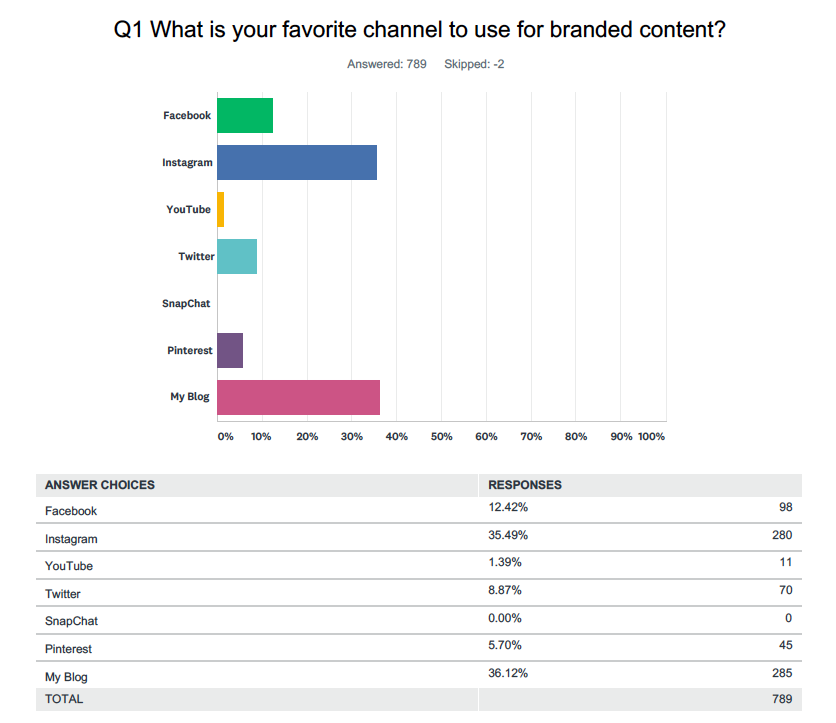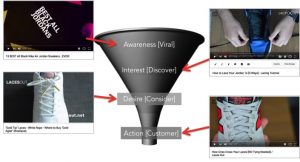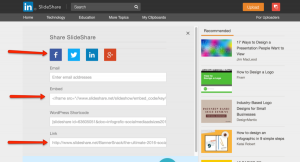— February 15, 2018

Over a year ago, TapInfluence partnered with Altimeter group to publish the results of an industry-leading influencer survey. In that time, influencer marketing has grown rapidly to become a multi-billion dollar digital channel. It’s important for marketing agencies, influencer networks and platforms like TapInfluence to keep a pulse on the ever-changing needs of influencers to better guide our brand customers to maximize their content relationships and ultimately, their success. In collaboration with our long-time partner, Carusele we surveyed 750 of our opt-in influencers in order to leverage their professional perspective.
The results of the survey provided a revealing update to the Altimeter study and taught us a few important things about the industry at large. You can learn more about all the survey results here. One glaring point emerged from this data: blogs are still the preferred platform of influencers (with Instagram as a close second) and Snapchat is no influencer’s favorite channel. As Tap’s VP of Customer Success and Brand Partnerships, I thought this point was interesting, so I decided to explore why.
Social Networks that Embrace Creators and Encourage Sharing Win

Survey Results
In our survey, it became clear that influencers’ first choice for publishing platforms were blogs (nope, they’re not going anywhere) and Instagram, while their second favorite platform was Facebook. Conversely, not one influencer surveyed named Snap as the preferred platform, and only 6% cited Pinterest as a favorite. This revelation about Snapchat is not a surprise. In fact, in Snap’s Q3 2017 earnings call, CEO Evan Spiegel directly acknowledged the issue, stating
“we have historically neglected the creator community on Snapchat…In 2018, we are going to build more distribution and monetization opportunities for these creators in an effort to empower our creative community…” -Evan Spiegel
Meanwhile, brands have all but stopped requesting Snapchat campaigns from TapInfluence, citing limited demographic reach and lack of data. Snapchat has yet to create a public API, which makes its data gathering capabilities inferior to that of other channels when it comes to influencer marketing.
Instagram’s growth is another factor that can be attributed to Snapchat’s lack of popularity among influencers. Of course, the release of stories made some of the content creation in Snapchat redundant for influencers. Instagram is also investing heavily in creators (following in the footsteps of its parent, Facebook) with its new branded content tool which offers additional insights and promotes creators in multiple ways. Finally, Instagram reports the highest engagement rates of all the social platforms, so creators have naturally found a home there to engage in a dialogue with their audiences.
Facebook may just be the most advanced social network when it comes to creator collaborations and data. They have actively promoted influencer-brand partnerships, allowing marketers to easily collect data on influencer posts and amplify top influencer content in paid ads with the click of a button. In addition, Facebook plays well with others. Blogs can easily be shared to Facebook and vice versa, Instagram is a natural fit thanks to Facebook’s acquisition of the company in 2012, and even videos can be embedded from YouTube. They win when it comes to data, and they host the widest user base with a diverse and highly targetable demographic set.
But let’s get back to blogs. They are the original social platform so they have the advantage of being the “home base” for influencers. In addition, they allow for the most creative control and the most diverse opportunities for monetization. Influencers are not only paid by brands for the creation of blog content, they can also earn compensation using pay-per-click ads, selling ad space, and incorporating affiliate links – all in one place. This content can then be easily shared on Instagram, Facebook, Twitter, and Pinterest. In addition, multiple mediums can be deployed on blogs, so influencers can easily host videos, images, and participate in comments easily. Because blogs play so well with other channels, they have become a natural home base for long-form content, creative control and curation, multiple monetization avenues, and diverse content types.
One thing that’s pretty obvious across these platforms: those embracing influencers are thriving. Influencers live on multiple channels. The networks that allow them to flow between platforms, monetize their content, and reveal deep data insights to brands will win big… while channels that do not will have to race to keep up.
Digital & Social Articles on Business 2 Community
(73)
Report Post






